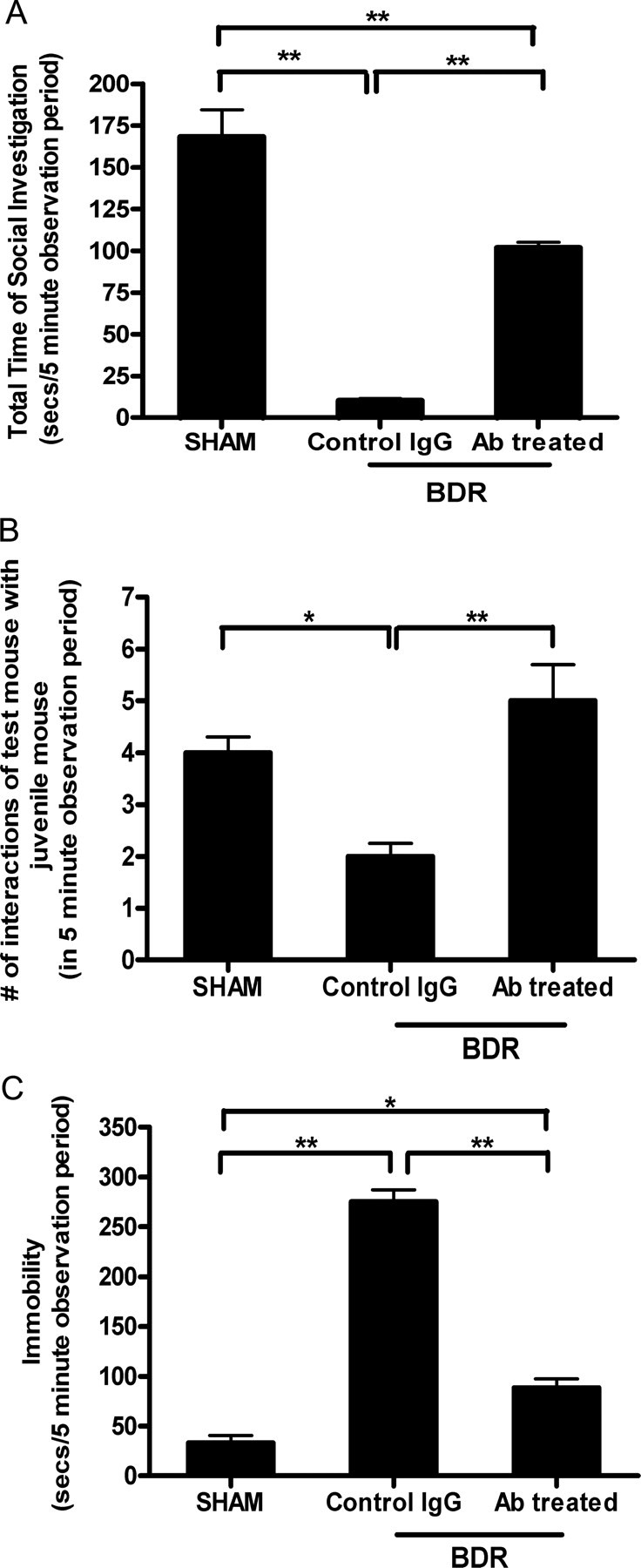Figure 12.

Cerebral recruitment of monocytes in BDR mice contributes significantly to the development of hepatic inflammation associated sickness behavior. Sickness behavior was assessed by quantifying (1) the duration of social exploratory behavior exhibited by an adult mouse toward a congenic juvenile mouse placed in close proximity (2), the total number of interactions of the adult test mouse with the juvenile mouse, and (3) the total time the test mouse remained immobile during the observation period. A, Total duration of social exploration in seconds during a 5 min observation period. Error bars represent mean ± SEM of data from 5 sham mice, 5 anti-P selectin and anti-α4 integrin-treated BDR mice, and 5 isotype IgG-treated control BDR mice; **p < 0.001 IgG-treated BDR versus sham controls; **p < 0.001 antibody-treated BDR versus IgG-treated BDR mice; **p < 0.001 antibody-treated BDR versus sham mice. B, Total number of interactions of the adult test mouse with a juvenile mouse during the 5 min observation period. Error bars represent mean ± SEM of data from 5 sham mice, 5 anti-P selectin and anti-α4 integrin-treated BDR mice, and 5 isotype IgG-treated control BDR mice; *p < 0.05 IgG-treated BDR versus sham mice; **p < 0.01 antibody-treated BDR versus IgG-treated BDR mice. C, Total time in seconds that the adult test mouse remained immobile during the 5 min observation period after the introduction of the juvenile mouse into the test mouse home cage. Error bars represent mean ± SEM of data from 5 sham mice, 5 anti-P selectin and anti-α4 integrin-treated BDR mice, and 5 isotype IgG-treated control BDR mice; **p < 0.001 IgG-treated BDR versus sham mice; **p < 0.001 antibody-treated BDR versus IgG-treated BDR mice; *p < 0.05 antibody-treated BDR versus sham mice. Ab, Antibody.
